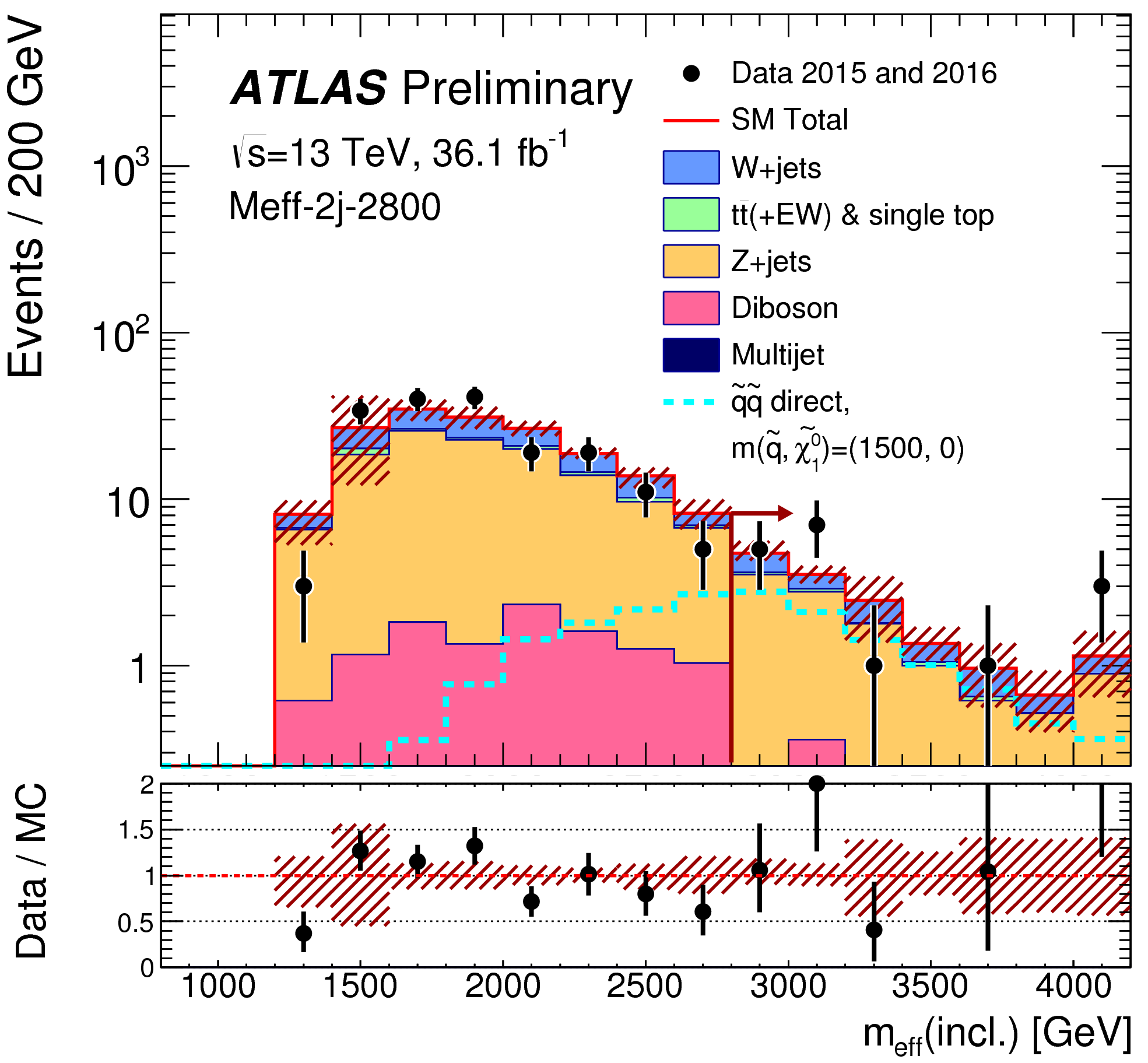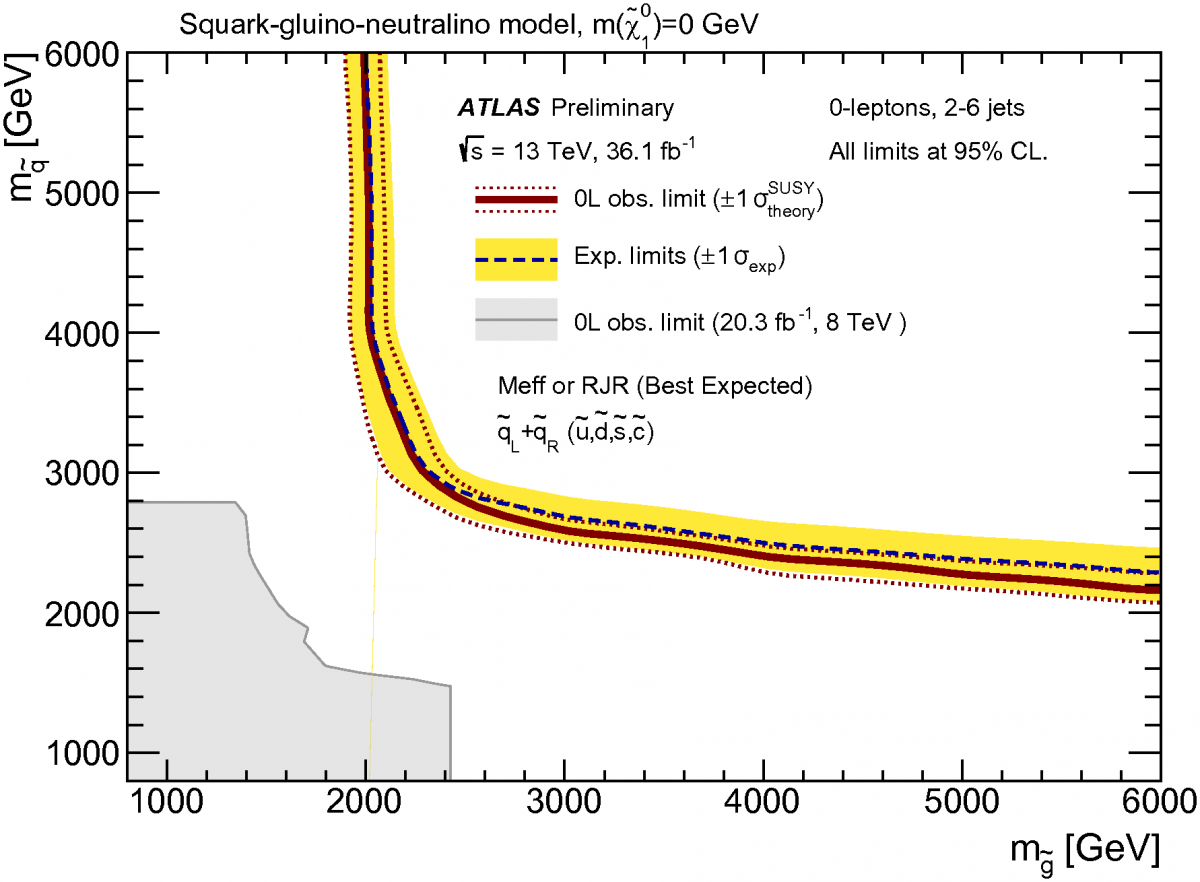The search for super-particles continues!
20 March 2017 | By

Many of the most important unanswered questions in fundamental physics are related to mass. Why do elementary particles, which we have observed and measured at CERN and other laboratories, have the masses they do? And why are they so different, with the mass of the top quark more than three hundred thousand times that of the electron? The presence of dark matter in our universe is inferred because of its mass but, if it is a particle, what is it? While the Standard Model has been a tremendously successful theory in describing the interactions of sub-atomic particles, we must look to even larger masses in search of answers and, potentially, new supersymmetric particles.
Many theories that go beyond the Standard Model, like supersymmetry (SUSY), suggest that some of the things missing from the current theory can be explained by the existence of undiscovered "partners" of the known elementary particles. Just as we know that particles, like the electron, can also have "anti"-particles, like the positron, SUSY predicts that each particle also has a super-partner; for leptons, there would be "sleptons", for quarks, "squarks", and so on. It is possible that dark matter is composed of one of these new particles.
While these super-partners are like their Standard Model counterparts in many ways, they must differ in one thing: their mass. Since we have yet to observe any of these super-partners it is likely that, if they exist, they are even heavier than we’ve been able to probe in the past. With the LHC energy of proton-proton collisions increased to 13 TeV, data collected by the ATLAS experiment provide the perfect opportunity to search for these massive super-particles.
Using the full Run-2 dataset collected to date, ATLAS has just completed a new search for evidence of SUSY.

Using the full Run-2 dataset collected to date, ATLAS has just completed a new search for evidence of SUSY, specifically searching for the production and decays of squarks and gluinos, the super-partner of the gluon. In these SUSY events, the pair-produced super-particles decay to quarks, potentially W and Z bosons, and neutralinos – a stable particle that escapes detection and could explain the identity of dark matter in the universe. To infer the presence or absence of super-particles, ATLAS analysts examined events containing high momentum jets of particles, coming from the decay of heavy super-particles, and a large amount of missing momentum resulting from escaping neutralinos. This information is combined into specialized kinematic observables, like the "effective mass" shown in Figure 1. As the name suggests, this variable is sensitive to the masses of potential super-particles produced in a proton-proton collision, with signals expected to appear as localized excesses of events on an otherwise steeply falling background.
The search failed to observe evidence of SUSY particles in the ATLAS data, but the null result is still informative. The absence of any significant excess of events is interpreted as constraints on potential SUSY scenarios, which could describe our world. An example of such a constraint is shown in Figure 2, where exclusion limits on the SUSY particle masses in events with squark and gluino production are summarized. While evidence of SUSY remains elusive, this search further restricts its prospects, with SUSY particle masses excluded up to 2 TeV and models with potential dark matter particles up to 1 TeV. And so the question remains: are super-particles out there? And if so, how massive are they?
Links:
- Search for squarks and gluinos in final states with jets and missing transverse momentum using 36 fb−1 of 13 TeV proton-proton collision data with the ATLAS detector (ATLAS-CONF-2017-022)
- Presentation at Moriond Electroweak Conference by Emma Siam Kuwertz: "Pushing limits on generic squarks and gluinos at LHC at 13 TeV"
- See also the full lists of ATLAS Conference Notes and ATLAS Physics Papers.



